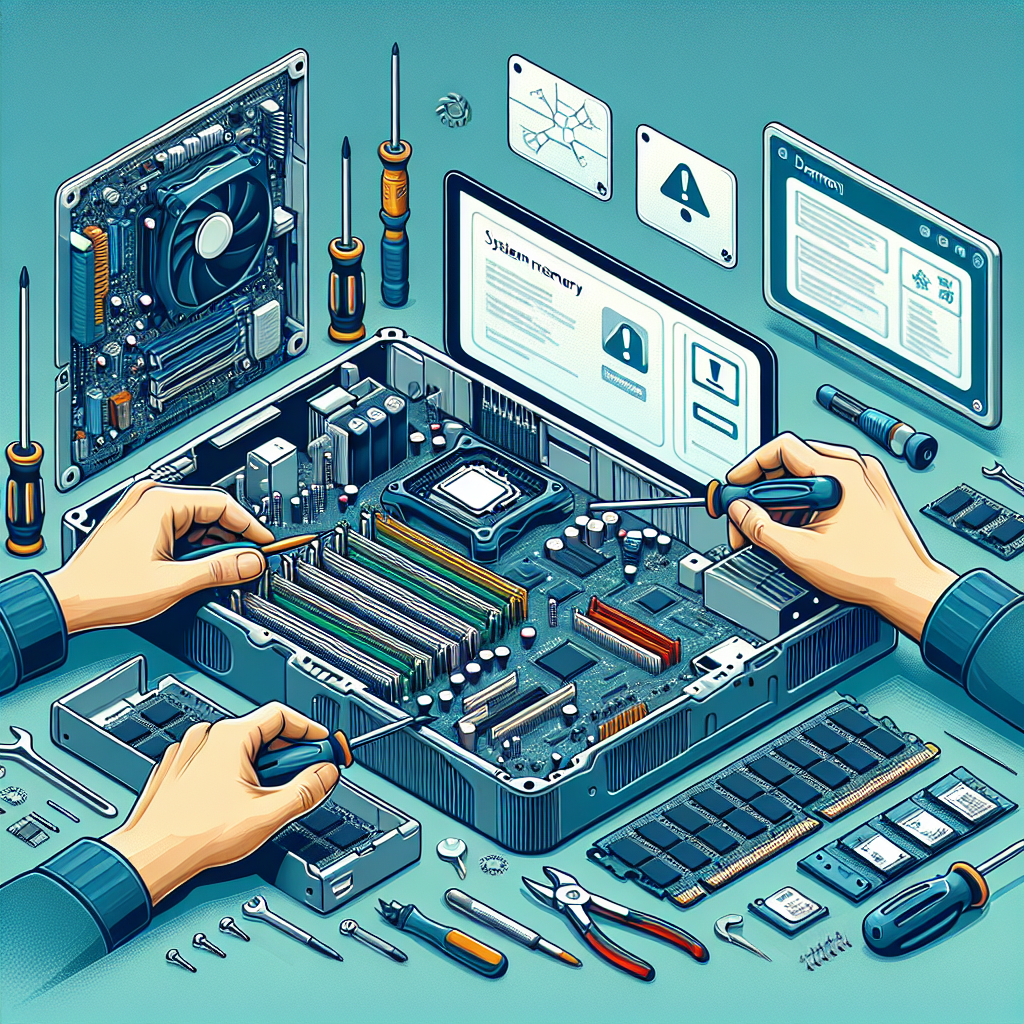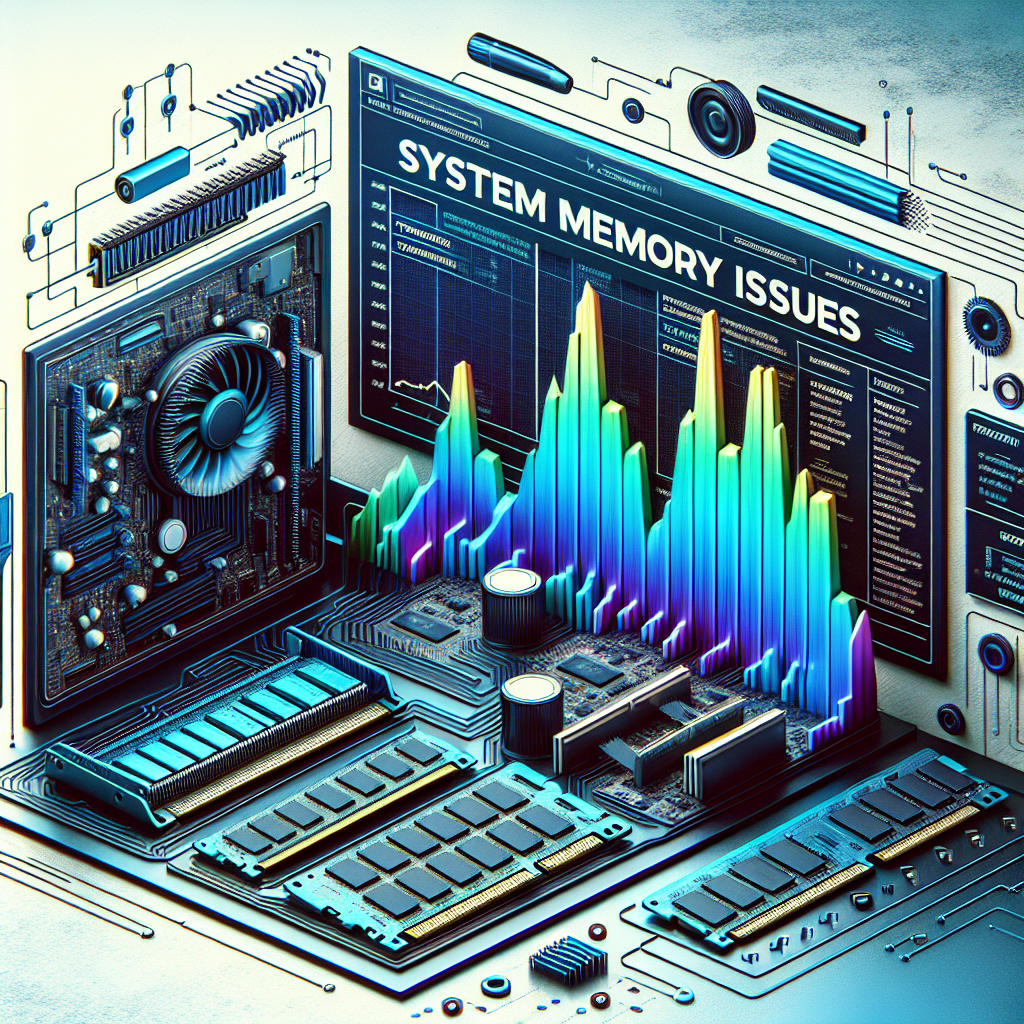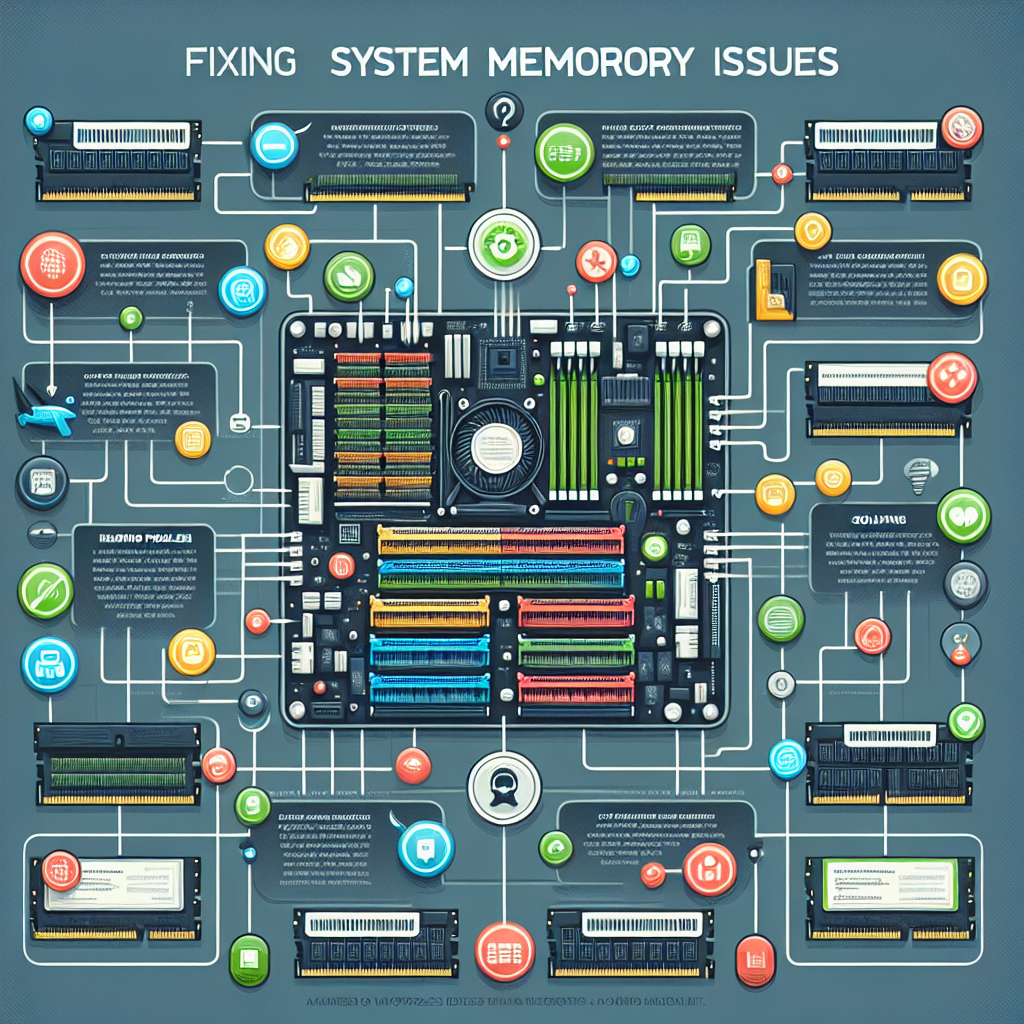Are you tired of your computer slowing down because of system memory issues? Look no further! In this comprehensive guide, we will delve into the world of fixing system memory issues and provide you with practical solutions to keep your computer running smoothly. From understanding how system memory works to troubleshooting common problems, we’ve got you covered. Say goodbye to frustrating lag times and hello to a faster, more efficient computing experience. Let’s dive into the world of system memory and discover how to keep your computer running at its best.
Understanding System Memory Problems

System memory problems can significantly impact the overall performance and stability of a computer system. By delving into the intricacies of these issues, users can gain a better understanding of how to identify and address them effectively.
-
Identifying Common Symptoms
Memory Leaks: One of the most prevalent system memory problems is memory leaks, where programs fail to release allocated memory properly. This can lead to a gradual depletion of available memory resources, causing system slowdowns and crashes.
Out of Memory Errors: Users may encounter out of memory errors when attempting to run applications that require more memory than is currently available. This can manifest as sudden program closures or system freezes.
Unresponsive Behavior: When system memory is strained, users may notice a significant decrease in responsiveness, with applications taking longer to load or respond to commands.
-
Exploring the Impact on Performance
Sluggish Response Times: Insufficient system memory can result in sluggish response times, as the system struggles to juggle multiple tasks simultaneously. This can lead to delays in executing commands and opening programs.
Frequent Freezing and Crashing: In severe cases of memory insufficiency, the system may experience frequent freezing or crashing as it tries to manage memory allocation for running processes.
Reduced Multitasking Capability: A computer with inadequate memory may struggle to handle multiple applications running concurrently, leading to a decrease in multitasking efficiency and overall productivity.
-
Debunking Myths About System Memory
Myth: Adding More RAM Solves All Performance Issues: While adding more RAM can improve system performance, it is not a one-size-fits-all solution for all performance issues. Other factors such as CPU speed, disk storage, and software optimization also play crucial roles.
Myth: Closing Unused Programs Frees Up Memory: Contrary to popular belief, simply closing unused programs does not necessarily free up memory. Some programs may still retain memory resources even after being closed, and the operating system manages memory allocation dynamically.
Diagnosing Memory Issues
When encountering system memory issues, diagnosing the root cause is crucial for effective resolution. Utilizing specific techniques can help pinpoint the source of the problem and guide appropriate corrective actions.
-
Utilizing System Monitoring Tools
System monitoring tools such as Task Manager in Windows or Activity Monitor in macOS provide real-time data on memory usage. By monitoring memory consumption, users can identify processes or applications that are using an unusually high amount of memory, potentially causing system slowdowns or crashes.
-
Conducting Memory Tests for Accuracy
Memory tests, such as Memtest86 or Windows Memory Diagnostic, can help assess the integrity of the system’s memory modules. These tests scan for errors in the memory hardware, helping to determine if faulty RAM is causing system instability. Running these tests periodically can preemptively detect memory issues before they escalate.
-
Analyzing Error Messages and Codes
Error messages and codes displayed during system crashes or freezes can offer valuable insights into memory-related issues. By analyzing these messages, users can identify specific error codes related to memory access violations or insufficient memory allocation. Understanding these messages can guide troubleshooting efforts towards resolving underlying memory problems effectively.
Resolving Memory Issues
When faced with system memory issues, it is essential to address them promptly to ensure optimal performance of your device. Resolving memory issues can be a multi-faceted process that involves various strategies and techniques. Below are some effective methods to tackle memory problems:
- Updating Device Drivers and Firmware:
- Device drivers and firmware play a crucial role in ensuring that hardware components communicate effectively with the operating system. Outdated or incompatible drivers can lead to memory issues and overall system instability. By regularly updating device drivers and firmware, you can potentially resolve memory-related issues and improve system performance.
-
Steps to update device drivers:
- Identify the hardware components that require driver updates.
- Visit the manufacturer’s website to download the latest drivers.
- Install the updated drivers following the manufacturer’s instructions.
-
Adjusting Virtual Memory Settings:
- Virtual memory serves as a supplement to physical RAM, allowing the operating system to utilize a portion of the hard drive space as temporary memory. Incorrect virtual memory settings can lead to memory allocation issues and system slowdowns. By adjusting virtual memory settings, you can optimize memory usage and potentially resolve memory-related issues.
-
Steps to adjust virtual memory settings:
- Access the System Properties window on your computer.
- Navigate to the Advanced tab and click on the Settings button under Performance.
- In the Performance Options window, go to the Advanced tab and click on the Change button in the Virtual Memory section.
- Adjust the virtual memory settings based on system recommendations or custom values.
-
Clearing Temporary Files and Cache:
- Over time, temporary files and cache accumulate on your system, consuming valuable memory resources. Clearing out temporary files and cache can free up memory space and potentially alleviate memory-related issues. Regularly cleaning up temporary files and cache is a simple yet effective way to optimize system memory usage.
- Steps to clear temporary files and cache:
- Use built-in system tools such as Disk Cleanup (Windows) or Disk Utility (Mac) to remove temporary files.
- Clear browser cache and cookies to free up additional memory space.
- Consider using third-party software tools for a more thorough cleanup of temporary files and cache.

Optimizing Memory Usage
When dealing with system memory issues, optimizing memory usage is crucial to ensure smooth performance and efficient resource allocation. By following these strategies, users can effectively manage memory usage and prevent common problems associated with low memory availability.
-
Managing Startup Programs
Startup programs can significantly impact memory usage by running in the background and consuming valuable resources. To optimize memory usage, it is essential to review and disable unnecessary startup programs. This can be done through the Task Manager or System Configuration utility on Windows or using the Login Items settings on macOS. By minimizing the number of programs that launch at startup, users can free up memory for essential tasks and improve overall system performance.
-
Utilizing Task Manager for Resource Allocation
The Task Manager is a powerful tool that provides real-time information about system performance and resource usage. By monitoring memory usage and identifying high-resource applications, users can make informed decisions about resource allocation. Task Manager allows users to end processes that are consuming excessive memory and track the impact of running applications on system performance. By actively managing resource allocation through the Task Manager, users can prevent memory issues and optimize system memory usage.
-
Implementing Memory-Optimization Software

In addition to manual memory optimization techniques, users can also leverage memory-optimization software to automate the process and maximize system performance. Memory-optimization software can help identify memory leaks, optimize memory usage, and improve overall system stability. By regularly running memory-optimization tools, users can ensure that system memory is efficiently utilized and prevent common memory-related problems. Choosing reputable memory-optimization software with positive reviews and a track record of effectiveness is essential for achieving optimal results.
Advanced Solutions for Persistent Issues
When encountering persistent system memory issues, it becomes crucial to explore advanced solutions that can effectively address the root causes of these problems. Below are some detailed strategies for tackling memory issues that tend to persist despite basic troubleshooting efforts:
- Upgrading RAM for Enhanced Performance
Upgrading the Random Access Memory (RAM) of your system can significantly improve its performance, especially if you frequently encounter memory-related slowdowns or errors. By increasing the amount of available RAM, you provide your system with more resources to handle multiple tasks simultaneously, reducing the likelihood of memory-related bottlenecks. Before upgrading your RAM, ensure compatibility with your system’s motherboard and choose a reputable manufacturer to guarantee optimal performance.
- Checking for Memory Leaks in Applications
Memory leaks occur when applications fail to release memory they no longer need, gradually depleting the available system memory over time. To identify and address memory leaks, consider using specialized debugging tools or monitoring software that can pinpoint which applications are consuming excessive memory resources. Once identified, developers can patch memory leaks through software updates or patches, restoring system stability and preventing future memory-related issues.
- Seeking Professional Assistance if Necessary
In cases where persistent system memory issues persist despite thorough troubleshooting efforts, seeking professional assistance from IT specialists or system administrators may be necessary. These experts have the knowledge and experience to conduct in-depth diagnostics, identify complex memory-related issues, and implement advanced solutions tailored to your specific system configuration. By consulting with professionals, you can ensure that underlying memory issues are effectively resolved, minimizing downtime and optimizing system performance.
FAQs for Fixing System Memory Issues: A Comprehensive Guide
What is system memory and why is it important?
System memory, also known as RAM (Random Access Memory), is a crucial component of a computer system that stores data and instructions for the CPU to access quickly. It allows the computer to run programs and perform tasks efficiently. Having enough system memory is important for ensuring smooth and fast performance of your computer.
What are common symptoms of system memory issues?
Common symptoms of system memory issues include sluggish performance, frequent freezing or crashing of programs, error messages related to memory, and the inability to run certain programs or tasks. If you notice any of these symptoms, it may indicate that your system memory is running low or is faulty.
How can I fix system memory issues?
There are several ways to fix system memory issues. You can start by closing unnecessary programs and browser tabs to free up memory. Updating your operating system and drivers can also help resolve memory-related issues. Additionally, you can increase your system memory by adding more RAM sticks to your computer or replacing the existing ones with higher capacity modules. Running memory diagnostic tools can also help identify any faulty memory modules that need to be replaced.
Is it possible to prevent system memory issues from occurring?
While it may not be possible to completely prevent system memory issues from occurring, there are steps you can take to minimize the likelihood of encountering them. Regularly cleaning up and optimizing your computer’s storage space can help free up memory and improve system performance. Avoiding running too many resource-intensive programs simultaneously can also help prevent system memory issues. Keeping your computer’s hardware and software up to date can also help prevent memory-related problems from arising.